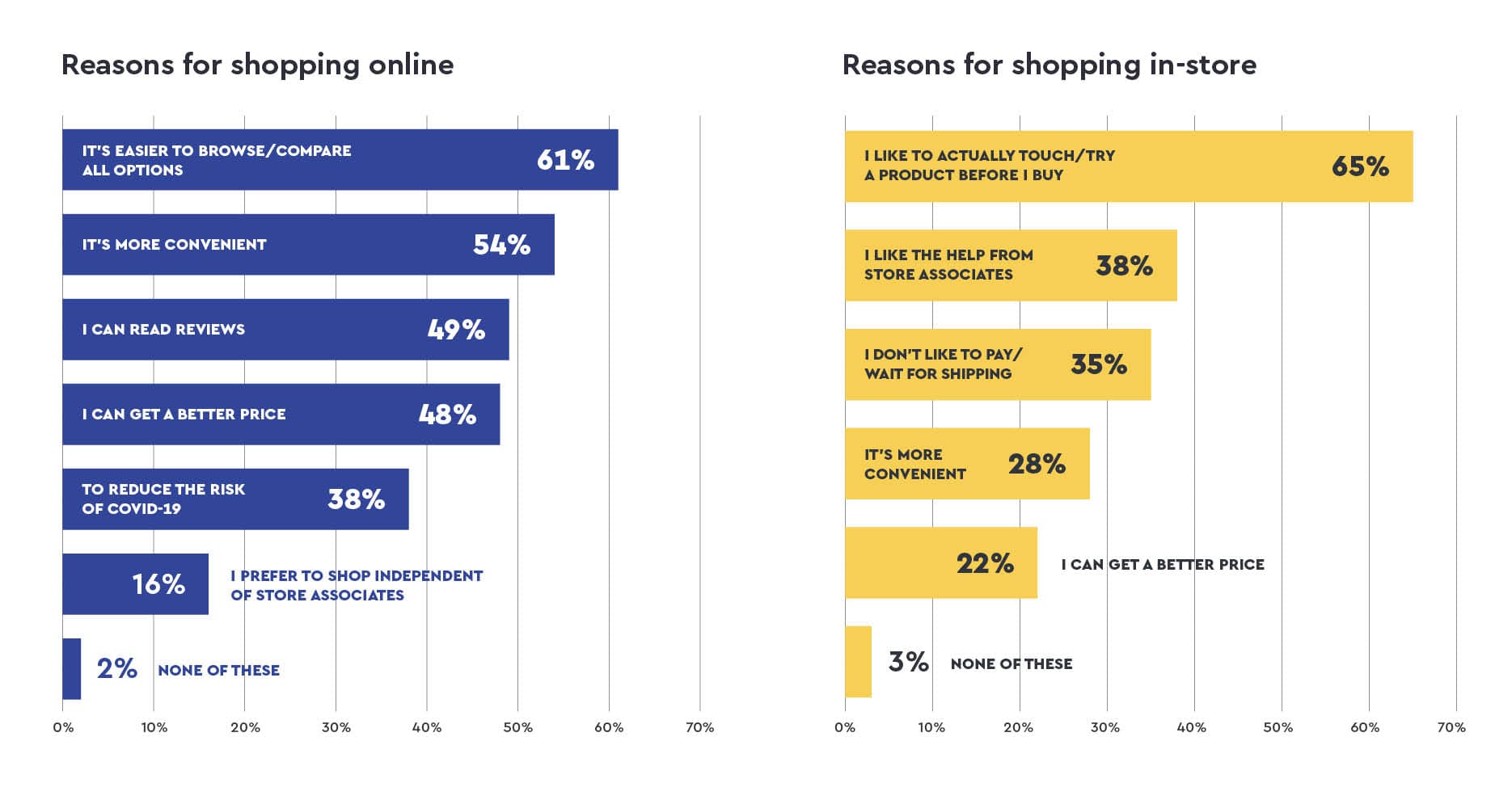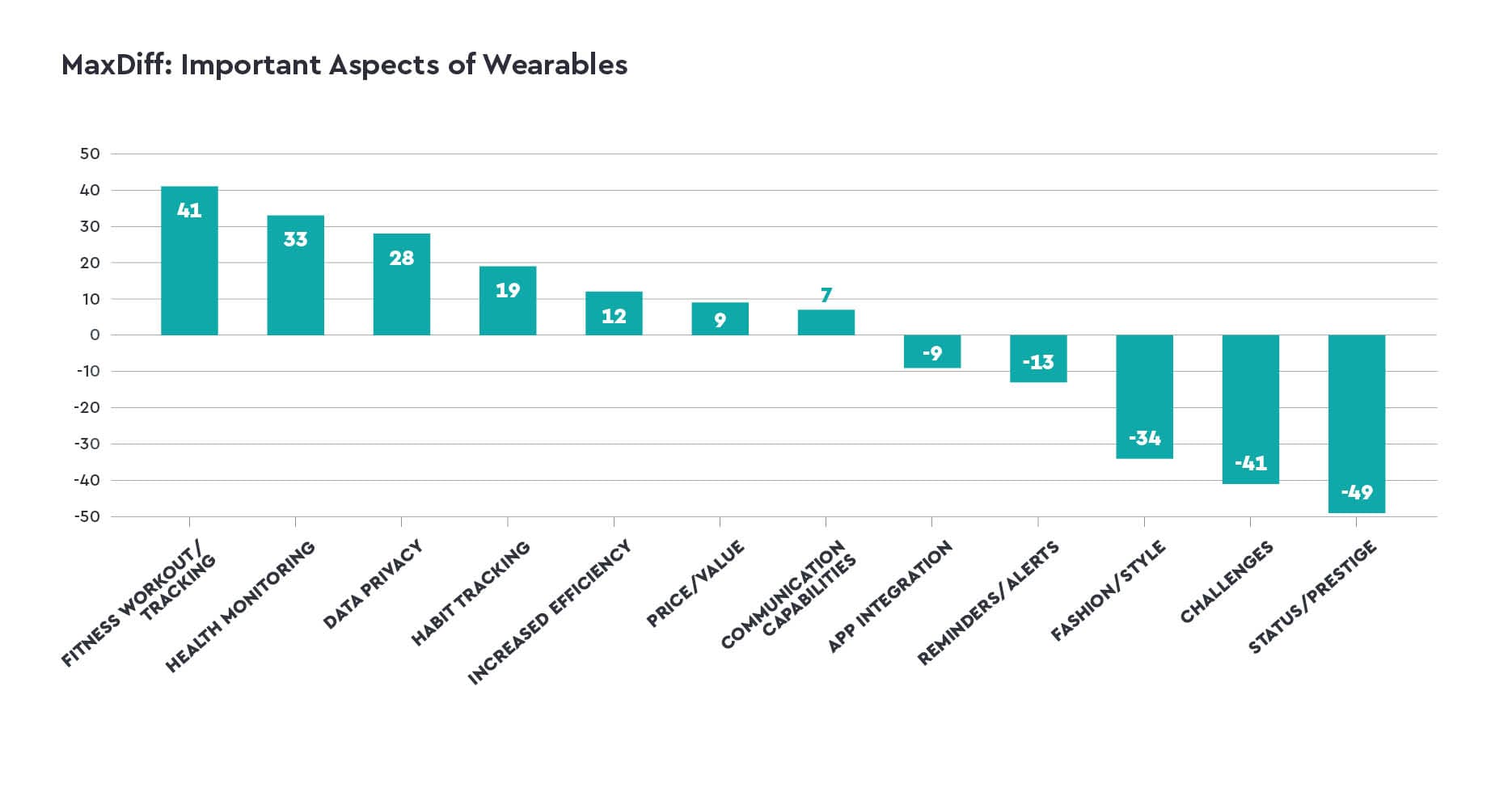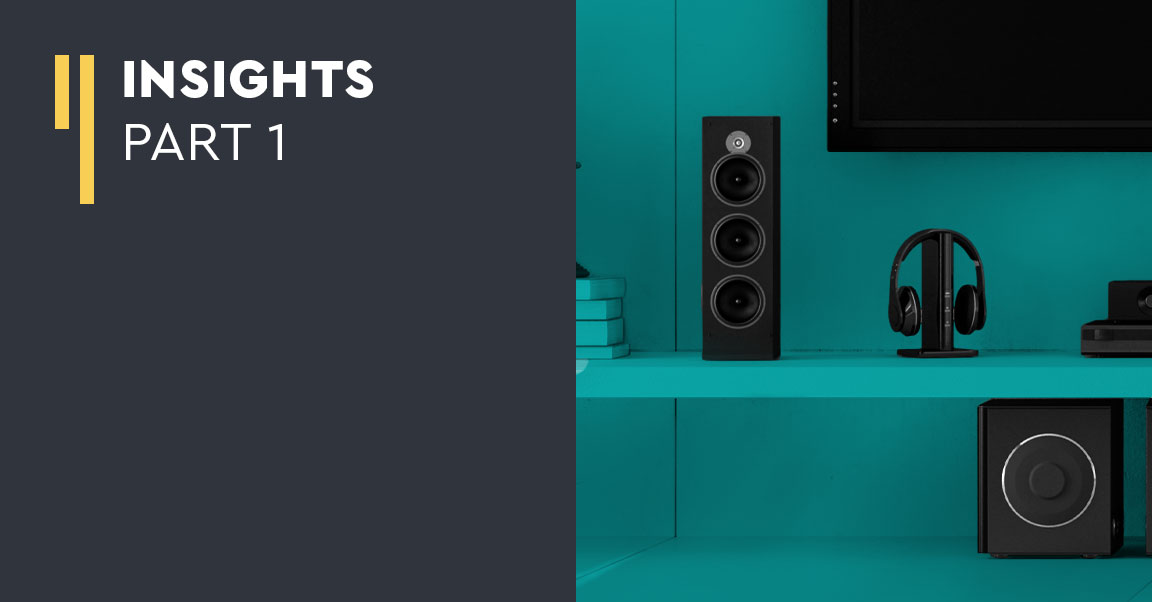quantilope’s Consumer Electronics study helps brands in this space navigate where consumers are shopping, which devices they’re buying, and how they’re using them.
We surveyed 800 US consumers, representative of the general population, all of whom own a consumer electronic device (i.e. smartphone, laptop, etc.).
Shopping Methods:
To start, we took a look at consumer electronic device shopping habits. Despite a primarily virtual past year, online shopping doesn’t dominate when it comes to shopping for electronics; 35% say they shop equally in-store/online, and the other two-thirds of consumers are split between shopping primarily online or primarily in-store.
As shown below, those who shop mostly online do so for ease of browsing options, convenience, and getting a better price. As for those who shop mostly in-store, about two-thirds (65%) say it’s to actually touch/try a product before they buy it.

Consumer electronic brands should be paying close attention to these shopping habits, considering consumers are in the market for new devices. In the next 6-12 months, 32% of consumers intend to buy a smartphone and 26% of consumers intend to buy a laptop computer.
In addition to shopping for new devices, consumers are also spending a lot of time on them: 56% say they are spending more time on them now than they were a year ago. And, they may be using their current devices to do research on the new ones they intend to buy; 76% say they do a lot of research before buying a new product (like product comparisons and reviews).
Device Deep-Dives
This study also includes a MaxDiff on consumer preferences for two specific device types: wearables and smart homes. At a glance, consumers use wearable devices mostly for health reasons (fitness/workouts and health monitoring), as shown below. This correlates to the most popular wearable devices consumers own: fitness trackers and smart watches (63% own each).

As for smart home devices, it’s all about efficiency (62% cited this as a reason for converting their residence into a smart home). The need for efficiency is also highlighted through consumers’ connected devices; 81% of smart home owners say at least a few of their devices are connected to one another (i.e. telling a smart speaker to dim the lights).
Take a closer look into these insights, as well as our two implicit methods, in our dashboard below.




.png)